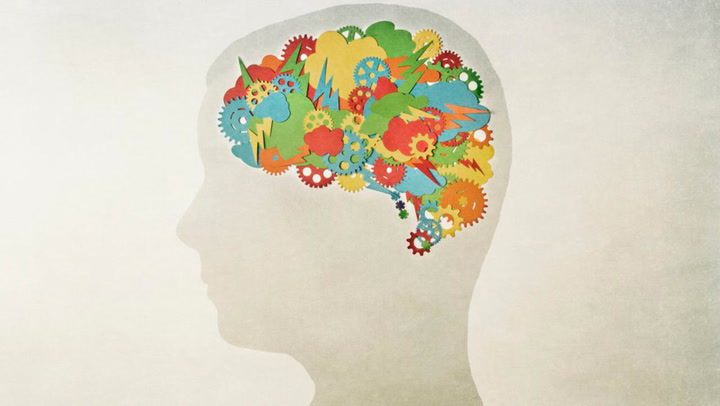Contents
- 1 Introduction
- 2 Understanding How Dialectical Behavior Therapy Works
- 3 Notable Figures in Dialectical Behavior Therapy
- 4 Applications of Dialectical Behavior Therapy in Treating Mental Health Disorders
- 5 Common Myths About Dialectical Behavior Therapy
- 6 Criticisms of Dialectical Behavior Therapy
- 7 Conclusion
Introduction

Dialectical Behavior Therapy (DBT): Techniques, Applications, and Effectiveness
Dialectical Behavior Therapy (DBT) is a cognitive-behavioral approach developed to help individuals manage intense emotions and improve their interpersonal relationships. It was designed to address issues such as emotional dysregulation and self-destructive behaviors. DBT integrates traditional cognitive-behavioral techniques with mindfulness and acceptance strategies, emphasizing a balance between accepting oneself and making positive changes.
This article provides a comprehensive overview of Dialectical Behavior Therapy, exploring its foundational principles, essential techniques, and practical applications. It also examines the therapy’s effectiveness in treating various mental health disorders and addresses some common criticisms.
What is Dialectical Behavior Therapy (DBT)?
Dialectical Behavior Therapy (DBT) is a specialized form of cognitive-behavioral therapy developed by Dr. Marsha Linehan in the late 1980s. It incorporates a dialectical perspective, emphasizing the balance between acceptance and change. DBT is structured around four main modules: Mindfulness, Distress Tolerance, Emotion Regulation, and Interpersonal Effectiveness. These modules are designed to help individuals manage emotional instability, improve relationships, and enhance overall quality of life.
In addition to these core modules, DBT includes specific techniques and strategies to support individuals in various aspects of their lives. It integrates skills from cognitive-behavioral therapy with principles from Zen Buddhism, which contributes to its unique approach DBT is often used in individual therapy sessions, group skills training, and phone coaching, making it a comprehensive treatment method for emotional and behavioral issues.
Why is Dialectical Behavior Therapy Important?
Dialectical Behavior Therapy is significant because it offers a structured and holistic approach to treating individuals with emotional dysregulation and interpersonal difficulties. The therapy’s focus on both acceptance and change helps clients build a life worth living while addressing the underlying issues that contribute to their emotional distress.
DBT’s comprehensive approach makes it effective for treating a range of mental health conditions, including borderline personality disorder (BPD), self-harm, and chronic suicidal ideation. Additionally, its skills-based framework provides clients with practical tools that can be applied in real-life situations, fostering long-term resilience and personal growth.
Understanding How Dialectical Behavior Therapy Works
Dialectical Behavior Therapy operates on the principle of balancing acceptance and change through a structured framework. The therapy involves a combination of individual therapy sessions and skills training groups. Individual therapy focuses on addressing specific issues and providing personalized support, while skills training groups teach clients practical skills to manage emotions and improve interpersonal relationships.
Next, we will explore the core principles of Dialectical Behavior Therapy (DBT), outline its key modules, and evaluate its effectiveness in addressing various psychological and relational challenges.
Simple Overview
Core Idea: Dialectical Behavior Therapy integrates cognitive-behavioral techniques with mindfulness and dialectics to help individuals manage emotions, improve relationships, and achieve a balanced life. DBT’s structured approach includes mindfulness, distress tolerance, emotion regulation, and interpersonal effectiveness, offering a comprehensive framework for addressing complex emotional and behavioral issues while fostering overall well-being.
Real-Life Example: A client with Borderline Personality Disorder (BPD) might use mindfulness techniques to stay grounded during intense emotional episodes, apply distress tolerance skills to navigate crises without resorting to self-harm, employ emotion regulation strategies to stabilize their mood, and enhance interpersonal effectiveness to strengthen relationships with family and friends. This integrated approach enables the client to achieve greater emotional stability and cultivate a more fulfilling and balanced life.
Critical Concepts
- Systematic Framework: This systematic approach provides clients with a comprehensive set of skills designed to manage their emotions and improve their relationships effectively. By offering a structured and multi-faceted skill set, DBT creates a robust foundation for emotional stability and interpersonal growth.
- Balance of Acceptance and Change: DBT balances the acceptance of oneself and one’s circumstances with efforts to change maladaptive behaviors. This dialectical approach facilitates personal growth while validating and accepting current experiences, promoting both self-compassion and proactive change. It encourages clients to embrace their present situation while striving for meaningful improvements.
- Skills-Based Training: DBT emphasizes practical skills training to help clients manage emotions and enhance relationships. By focusing on actionable techniques, DBT equips clients with tools to navigate challenging situations and improve their overall quality of life. This approach ensures that clients not only understand but also effectively apply skills in real-world scenarios.
Techniques Used in DBT
- Mindfulness: Mindfulness in DBT involves cultivating an enhanced awareness of the present moment, including one’s thoughts, feelings, and bodily sensations, without judgment. To increase awareness and acceptance of the present moment, which helps in reducing emotional reactivity and improving emotional regulation.
- Distress Tolerance: Distress Tolerance skills focus on helping individuals manage and endure distressing situations without resorting to maladaptive behaviors. Distress Tolerance skills focus on helping individuals manage and endure distressing situations without resorting to maladaptive behaviors.
- Emotional Regulation: Emotional Regulation skills aim to help individuals understand, manage, and change their emotional responses. To assist individuals in managing their emotions in a healthier way, reducing mood swings, and improving overall emotional stability.
- Interpersonal Effectiveness: Interpersonal Effectiveness skills are designed to improve individuals’ ability to communicate and interact effectively with others while maintaining self-respect and relationships. To enhance interpersonal skills, allowing individuals to build and maintain healthy relationships and assert themselves appropriately in social interactions.
Relationship Between Dialectical Behavior Therapy & Cognitive Behavioral Therapy (CBT)
Dialectical Behavior Therapy (DBT) and Cognitive Behavioral Therapy (CBT) share similarities, including their cognitive-behavioral foundation and focus on changing maladaptive behaviors. However, DBT distinguishes itself by integrating mindfulness and dialectics, which emphasize balancing acceptance and change. DBT’s structure includes specific modules—mindfulness, distress tolerance, emotion regulation, and interpersonal effectiveness—providing a more comprehensive approach to emotional and behavioral issues. While CBT focuses primarily on cognitive restructuring and behavior modification, DBT incorporates additional techniques to address complex emotional and relational challenges.
Notable Figures in Dialectical Behavior Therapy
Marsha Linehan: Developed DBT, integrating cognitive-behavioral techniques with mindfulness and dialectics to address emotional dysregulation and interpersonal issues. Linehan’s work has significantly impacted the treatment of borderline personality disorder and other mental health conditions.
Alan E. Fruzzetti: Contributed to the development and application of DBT, focusing on how DBT can be used to improve family dynamics and relationships. Fruzzetti’s work emphasizes the role of DBT in enhancing interpersonal effectiveness and communication.
Kelly Koerner: Kelly Koerner has contributed to the development of DBT through her work on integrating DBT with other therapeutic modalities and improving treatment strategies. She has written extensively on practical applications of DBT and has developed resources for clinicians.

Theories Influenced by Dialectical Behavior Therapy
- Mindfulness-Based Cognitive Therapy (MBCT): Integrates mindfulness practices with cognitive-behavioral techniques to address depression and prevent relapse by fostering awareness and acceptance of thoughts and feelings, ultimately enhancing emotional regulation and reducing recurrence of depressive episodes.
- Acceptance and Commitment Therapy (ACT): Combines mindfulness and acceptance strategies with behavioral change techniques, focusing on living a meaningful life while accepting negative thoughts and feelings, thereby promoting psychological flexibility and resilience.
- Schema Therapy: Incorporates DBT techniques to help clients identify and change maladaptive schemas and patterns of behavior related to early life experiences, addressing deep-seated beliefs and emotional struggles through structured interventions.
- Cognitive Processing Therapy (CPT): Incorporates DBT’s techniques for emotional regulation and distress tolerance into trauma-focused cognitive therapy to address PTSD, facilitating the processing and re-evaluation of traumatic memories to reduce distressing symptoms.
Applications of Dialectical Behavior Therapy in Treating Mental Health Disorders

Depression
DBT helps manage depression by integrating emotion regulation and distress tolerance skills with cognitive and behavioral strategies. This combination aids in stabilizing mood and addressing negative thought patterns.
Example: For someone struggling with depression, DBT can be useful in teaching skills to manage overwhelming emotions, such as using mindfulness to stay grounded and cognitive restructuring to challenge persistent negative thoughts. Behavioral activation strategies can also help increase engagement in pleasurable activities, improving overall mood and functioning.
Image Source: seedwellness.co.uk

Anxiety Disorders
DBT combines mindfulness and distress tolerance techniques with exposure therapy and cognitive restructuring to manage anxiety symptoms. This approach helps individuals confront their fears and develop effective coping strategies.
Example: A person with social anxiety might benefit from DBT by using mindfulness exercises to stay calm during social interactions, engaging in gradual exposure to feared situations to reduce avoidance behaviors, and applying cognitive restructuring to challenge and reframe irrational worries about social performance.
Image Source: time.com

Borderline Personality Disorder (BPD)
DBT is specifically tailored for BPD, focusing on skills for emotional regulation, interpersonal effectiveness, distress tolerance, and mindfulness. This helps individuals manage intense emotions, improve relationships, and reduce self-destructive behaviors.
Example: For someone with BPD, DBT can be instrumental in learning how to manage intense mood swings and improve relationships. Skills training can help reduce self-harm behaviors and improve emotional stability by teaching effective ways to cope with distress and enhance communication.
Image Source: mywellbeing.com

Trauma and PTSD
DBT uses emotional regulation and distress tolerance skills alongside trauma-focused interventions to help individuals process and manage traumatic experiences, reducing PTSD symptoms.
Example: For a trauma survivor, DBT can be helpful by providing techniques to manage distressing emotions related to trauma, such as using distress tolerance skills to handle triggers and mindfulness to stay present. Additionally, cognitive techniques within DBT can aid in reframing negative beliefs associated with the trauma.
Image Source: agourahillscounseling.com

Eating Disorders
DBT combines emotion regulation and mindfulness techniques with nutritional counseling and behavioral strategies to address disordered eating patterns and improve overall relationship with food.
Example: A person with binge eating disorder may find DBT useful for managing emotional triggers related to eating. Mindfulness can help increase awareness of eating behaviors, while emotion regulation skills support coping with stress without turning to disordered eating. Behavioral strategies can assist in developing healthier eating patterns.
Image Source: paatc.org
Common Myths About Dialectical Behavior Therapy
| Myth | Fact |
| DBT is only for borderline personality disorder. | DBT was initially developed for BPD but is now used to treat various conditions, including self-harm, chronic suicidal ideation, eating disorders, and substance use disorders. |
| DBT is just about talking; it doesn’t involve any practical skills. | DBT includes practical skills training in four core areas: Mindfulness, Distress Tolerance, Emotion Regulation, and Interpersonal Effectiveness. These skills are designed to be applied in real-life situations. |
| DBT is the same as traditional cognitive-behavioral therapy (CBT). | While DBT incorporates elements of CBT, it uniquely combines these with mindfulness and acceptance strategies, focusing on balancing acceptance with change. |
| DBT is a short-term therapy. | DBT is typically a longer-term treatment, often lasting several months to a year or more, depending on individual needs and goals. |
Criticisms of Dialectical Behavior Therapy
- Complexity and Rigidity: DBT’s structured framework and comprehensive skill set can be challenging for both clients and therapists. The therapy’s complexity demands a deep understanding and consistent application of its multifaceted techniques, which can be overwhelming. Clients need to engage actively in individual therapy, skills training groups, and homework assignments, which may require significant time and effort.
- Dependency on Therapist Skill: The effectiveness of DBT is heavily reliant on the therapist’s proficiency in applying its techniques and principles. DBT requires therapists to expertly balance acceptance and change, a skill that necessitates extensive training and experience. The therapy’s success hinges on the therapist’s ability to seamlessly integrate various components—such as mindfulness, distress tolerance, emotion regulation, and interpersonal effectiveness.
- Resource Intensity: DBT can be resource-intensive, both in terms of time and financial costs. The therapy typically involves a combination of individual therapy sessions, skills training groups, and phone coaching, all of which require substantial resources. For many clinical settings, particularly those with limited budgets or high client volumes, this extensive framework may be difficult to implement consistently.
Conclusion
Dialectical Behavior Therapy offers a comprehensive and structured approach to psychotherapy, integrating cognitive-behavioral techniques with mindfulness and dialectics. By focusing on acceptance and change, DBT provides a balanced framework for addressing emotional dysregulation, improving interpersonal relationships, and promoting personal growth. Its application extends beyond borderline personality disorder to various mental health conditions, making it a versatile and effective therapeutic approach. Despite some criticisms, DBT’s systematic framework and emphasis on practical skills contribute to its effectiveness in helping individuals achieve emotional stability and a fulfilling life.
References
- Linehan, M. M. (1993). Cognitive-behavioral treatment of borderline personality disorder. Guilford Press.
- Linehan, M. M. (2015). DBT® skills training manual (2nd ed.). Guilford Press.
- Fruzzetti, A. E., & Moriaux, M. (2008). The application of dialectical behavior therapy to family therapy. Journal of Family Therapy, 30(1), 1-16.
- Leyes, K. L., & McLaughlin, J. M. (2009). Dialectical behavior therapy with diverse populations. Behavior Modification, 33(5), 709-731.
- Kabat-Zinn, J. (2003). Mindfulness-based stress reduction (MBSR). In G. C. H. (Ed.), Mindfulness: A practical guide to finding peace in a frantic world (pp. 10-25). Piatkus.
- Hayes, S. C., Strosahl, K. D., & Wilson, K. G. (2011). Acceptance and commitment therapy: The process and practice of mindful change (2nd ed.). Guilford Press.
- Young, J. E., Klosko, J. S., & Weishaar, M. E. (2003). Schema therapy: A practitioner’s guide. Guilford Press.
- Resick, P. A., & Schnicke, M. K. (1992). Cognitive processing therapy for rape victims: A treatment manual. Sage Publications.
- Neacsiu, A. D., & Linehan, M. M. (2014). Dialectical behavior therapy for posttraumatic stress disorder. Journal of Clinical Psychology, 70(6), 541-556.
- McMain, S., & Guimond, T. (2010). Dialectical behavior therapy for borderline personality disorder. *In P. J. B. & C. F. (Eds.), Handbook of evidence-based therapies for children and adolescents (pp. 327-346). Springer.
Explore more Theories & Therapies








